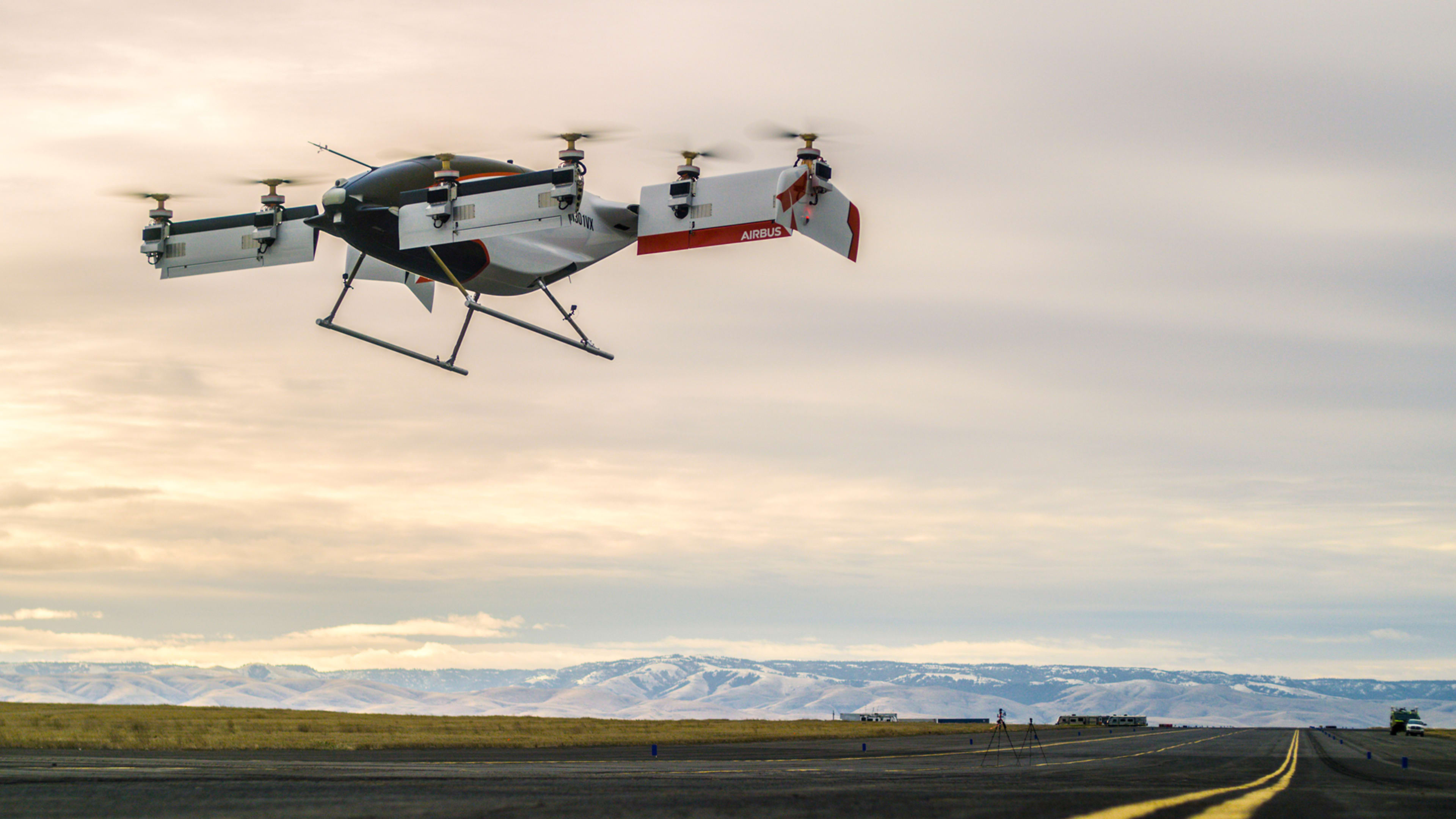At a remote test facility in northeast Oregon. an improbable-looking plane takes flight. Its wings are perpendicular to the ground, with their propellers—a whopping eight of them—spinning like the rotors of a helicopter. There is no pilot. The oddball craft, called Vahana, ascends 16 feet above the tarmac in a wobbly fashion, hovers briefly, then returns to the ground, guided throughout by its autonomous flight system.
The 53-second test on January 31 may have looked clunky, but to a determined cadre of dreamers, from backyard tinkerers to NASA engineers, this first, halting trip was an elegant glimpse of the near future. Within five to 10 years, they hope, pilotless flying taxis will whisk everyday commuters (not just one percenters) over congested megacities around the world.
Vahana is at the head of a coming flotilla of electric-powered craft, along with Cora, from Larry Page-backed Kitty Hawk, which debuted in early March. More than a dozen other companies are chasing the two, including Bell and the very-stealthy Joby.

Named for the flying creatures that carry the Hindu gods, Vahana went from idea to first flight in two years—unheard-of speed in the plodding world of aeronautical engineering. “That’s basically our modus operandi. Go as fast as possible, because we’re demonstrating risky things, and there’s no point writing white papers for years,” says Rodin Lyasoff, an aerospace engineer and CEO of Vahana maker A³ (called “A Cubed”). It’s a Silicon Valley-based outpost for European aeronautics giant Airbus. If all goes according to plan, Lyasoff expects to have an FAA-certified version of Vahana ready for passengers by 2022.
The Electric Revolution
A global race is on to build electric, pilotless air taxis, driven largely by Uber’s push to dominate the industry—not by making its own planes, but by dangling the prospect of lucrative deals for its Uber Elevate program before aircraft manufacturers.
Airbus, however, is not chasing deals with Uber. It’s chasing Uber itself, with plans to build an entire transport network including apps, dispatch systems, and small parking-lot sized heliports. And Vahana is just one prong of a strategy ranging from traditional piloted helicopters to a wild modular system concept that morphs from car to quadcopter and back again for door-to-door robotic service.
“Airbus had a look at [the air taxi business] and said okay, if these network effects are there, we’re going to take the UPS model and build a fully integrated transportation service that’s more than the airframes that we do today,” says Mathias Thomsen, a former Uber exec who’s now general manager of Airbus Urban Air Mobility.
With the first fatality involving a self-driving car, it’s impossible now to talk about any autonomous craft without recognizing that accidents will occur. We may not know for a while what happened in Tempe, Arizona, but even if the car was blameless, it illustrates that autonomous systems will have to deal with lots of sudden hazards. If a pedestrian can dart into car traffic, so can a bird with air traffic. A³ declined to comment on the March 18 Uber accident. Fortunately, the air taxi industry has many years to absorb lessons from the driverless car business.
Vahana and Uber Elevate share a spiritual founder in Mark Moore, a 32-year NASA veteran who ran projects on electric propulsion and on-demand transit. A decade ago, he saw the potential for electric motors to revolutionize aircraft design by eliminating all the bulk of gas-powered engines. “I finished my PhD coursework at Georgia Tech in 2008,” he says, “and immediately started on my dissertation topic, ‘Synergistic Integration of Electric Aircraft Propulsion,’ as I had been intrigued with the unique characteristics of advanced electric motors offered to vertical takeoff aircraft.” Moore kicked off the Electric VTOL transit craze in 2009 with a stunning concept for an adorable one-person craft called the Puffin.
Electric flight is an appealing concept that’s just now becoming feasible. The electric car industry has spurred development of high-capacity Lithium-ion battery packs that can power a small plane, at least on a short journey. Meanwhile, Uber and rivals like Lyft and China’s Didi have created a market for short, on-demand, shared transit.
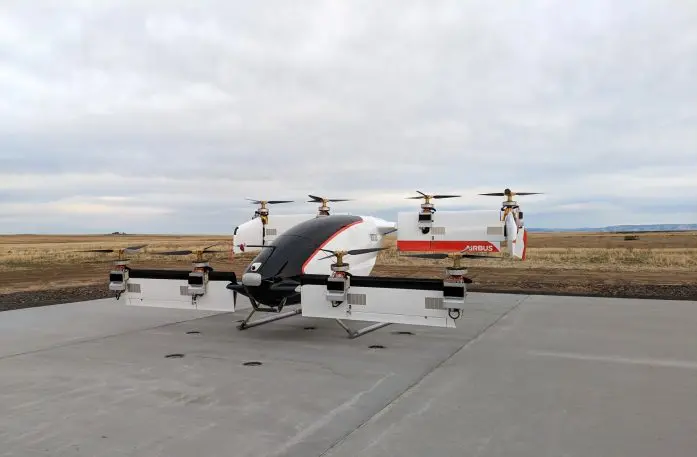
In place of mechanical bulk, electric propulsion opens room to add a lot of propellers by simply stringing power cables and mounting small, powerful, and inexpensive motors. Spreading out more propellers allows more airflow over the wing, for better lift. “You can get rid of engines, combustion. You can get rid of hydraulics, which are nasty,” says Mike Hirschberg, an aerospace engineer and executive director of the American Helicopter Society, a major VTOL promoter. “So, you get rid of a lot of the claptrap that’s heavy and complicated and costly and can fail.”
The simplicity of electric propulsion makes room for other types of complexity, like tilting wings or propellers mounted on tilting motors—two rival strategies for VTOL planes. “I think that’s very much a reason why you see so many complicated designs as you do—and the fact that they are being flown successfully,” says Ashish Bagai, a former DARPA program manager and now research scientist at the University of Maryland’s Department of Aerospace Engineering.
Why not keep things simple and build electric helicopters instead of transformer planes? Several companies are. China’s EHang is test-flying essentially a giant version of a toy drone that will carry passengers in Dubai. Germany’s Volocopter has test-flown something that looks like a traditional helicopter, albeit one with 18 rotors. But helicopters take a lot of power to stay airborne.
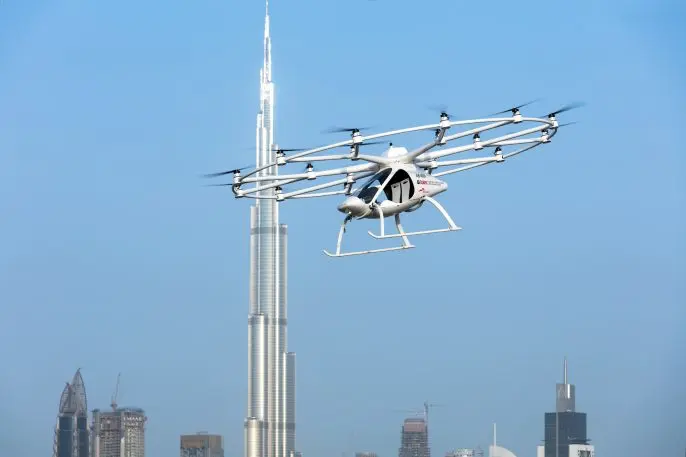
Another boon for electric planes is redundancy. The more (inexpensive) propellers you add, the more you can afford to lose. Vahana can fly fine if any one of its eight props fail. In some cases, it can keep flying with two dead props. “Greater redundancy equals lower cost of safety,” says Lyasoff. “Motors fail in more predictable ways [than gas engines]. Temperature and vibration will tell you when a motor’s about to fail.” Should everything go wrong, however, Vahana has a whole-plane parachute to bring it down for a soft landing.
Cultivating Startup Moxy
Uber’s Mark Moore gives kudos to his Bay Area rivals. After all, he helped pioneer the tilt-wing concept while at NASA, successfully test-flying in 2015 a 10-propeller scale model (with a 10-foot wingspan) called the Greased Lightning.
“The Airbus Vahana concept is a very good approach,” says Moore. “I have high confidence in it, and they have a really excellent small team that’s rapidly pushing forward to flight demonstrations at an incredible pace.”
Speed is the hallmark of A³. “What we’ve done in basically, I’ll say two years . . . is something that would take big Airbus probably five to 10 years to do,” says Jeff Mabry, a former U.S. Air Force test pilot who’s leading the Vahana flight tests.
https://vimeo.com/221950605
Startups often have the moxy to take leaps of faith because they don’t have enough money to waste time. Lyasoff’s challenge is to foster the same energy within a multibillion-dollar, multinational corporation. “We put pretty unreasonable schedules on projects so that we can bound them,” says Lyasoff. “Because you can improve anything indefinitely.”
It’s the fail-fast, ready-to-pivot strategy that’s become an article of faith in the Valley. A³ is basically looking for deal breakers as early as possible to see, in a very unsentimental way, if an idea’s worth pursuing. To hedge bets, A³works on several ideas at once. “I have a mandate to innovate, and we have projects that have nothing to do with aircraft manufacturing directly,” says Lyasoff.
Related: Transpose, Airbus’s Radical Modular Plane Project, Is Over
When A³ started work on Vahana in February 2016, it also began to develop an air charter service called Voom. It uses traditional piloted helicopters and Uber-like pooling technology to share costs among riders, promising to cut prices by up to 80%. Voom launched in April 2017 in traffic-choked São Paulo, Brazil, where a 20-mile car trip from the airport to downtown can take three hours—in good traffic—versus about 15 minutes flying (at about $120 per passenger). In March, Voom expanded to Mexico City.

Cutting Time
A³ currently has about 90 employees divided between Vahana, and at least one other project (air traffic management software). They work out of two locations, one a standard office setup in downtown San Jose, and another called The Nest, a combination office and hangar for the Vahana project, in nearby Santa Clara. That’s where I first saw Vahana, or rather the carbon-fiber shells that would become the first two test models, in July 2017.
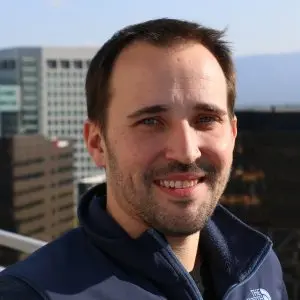
Next, we passed a pole with a propeller mounted on top for testing. The custom-designed electric motor wasn’t ready, so the prop was connected by a pulley to another motor they had handy. “A lot of things we try to do are to parallelize tasks that are not relying on the delivery of one component,” said Lovering. The specialized motors are an exception for Vahana. It’s built mostly from off-the-shelf parts to see if a concept can work with current, affordable technology, not some speculative future innovations.
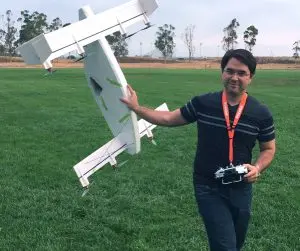
The A³ team can work improvisationally because it’s building a proof of concept—what Lovering calls the “minimum viable product”—far from a final design for FAA certification. A³ project manager Herve Hilaire calls this the alpha phase for quickly identifying problems. “So basically, we’re retiring 80% of the risk with 20% of the effort,” he says.
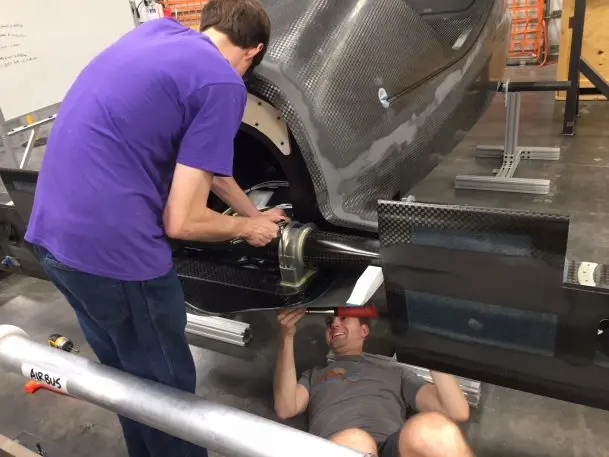
At the Pendleton, Oregon, test facility, Vahana followed predefined paths, from waypoint to waypoint—far simpler than just punching in a destination and having the plane figure out a route.
Vahana will have to do that someday. But A³ still has several years of plane development ahead before the technology for autonomous flight planning, and avoidance of obstacles like other planes, needs to be perfected. “I think we have made very large strides in that direction,” says Ashish Bagai about autonomous flight technology, in general. “There’s quite a bit more to do,” he adds.
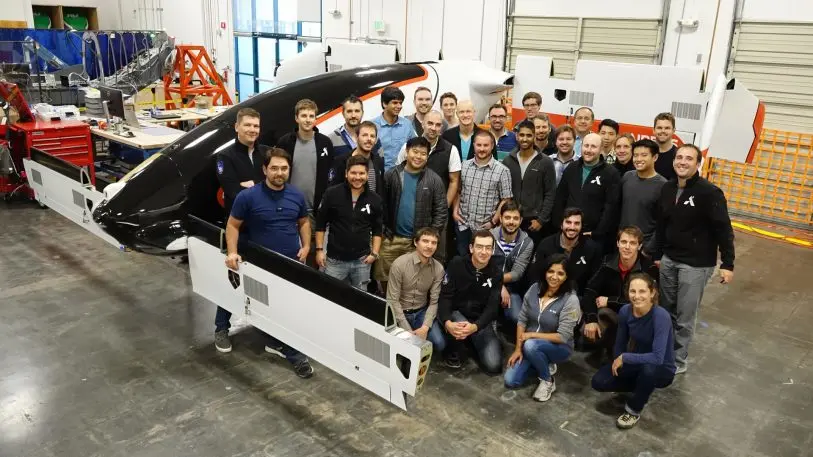
Chasing Opportunities, Not Dreams
The beta phase, says Hilaire, will take a few more years, and Vahana could look much different by then. The alpha has room for just one passenger, for instance. A³ expects market demand to be mostly for single riders, but there are also technical limitations in battery capacity. “Currently, except for very small aircraft, the [battery] capability really isn’t there, so that’s why you’re seeing Vahana is a single-seat,” says Mike Hirschberg.
“At this phase, we’re focused on single passenger because it’s the smallest plane we can build,” says Lovering. “There might be a two-passenger variant.” There could also be a cargo-only version of the plane, says Lyasoff, or a flying ambulance version—whatever fits a market demand.
Vahana itself grew out of a marketing study. “You look at the cost versus range for what different technologies could enable,” says Lyasoff. “It was very clear . . . that there’s a gap that electric VTOL can fill.”
But what about the inspiration for Vahana? I ask him, several times. “We want room for that inspiration to generate the idea, but then we also want you to validate it really rigorously,” says Lyasoff. “When I’m inspired, I’m inspired because I believe in my idea. But when I show you the data that supports it, you believe in that idea. Inspiration’s beautiful, but data’s possible.”
Recognize your brand’s excellence by applying to this year’s Brands That Matter Awards before the early-rate deadline, May 3.
